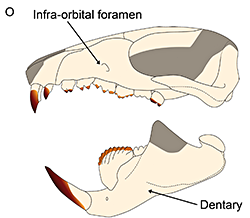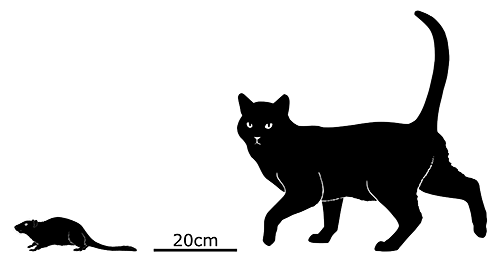Multituberculates were a group of rodent-like mammals that originated back in the Early Jurassic, at a point on the mammalian family tree between the origin of monotremes and the earliest therians (represented today by marsupials and placentals).
While they were an incredibly successful group, found around the world in large numbers, in Late Cretaceous Europe multis had become incredibly rare and restricted to just a single place: Hațeg Island.
Isolated there, they evolved into a unique family known as the kogaionids, diverging from their ancestral mostly-herbivorous diet to instead become specialized insectivores with distinctly red iron-pigmented teeth and huge blade-like lower premolars.

Some of them also had oddly domed skulls and proportionally tiny brains, along with highly acute senses of smell, eyesight, balance, and motor control.
Kogaionon ungureanui was one of the first kogaionids to be discovered, and gives its name to the group as a whole. Although known only from a skull, it was probably rat-sized, around 30cm long (~12″).
Unusually for island species, which are often ecologically fragile and vulnerable, the kogaionids’ insectivorous habits allowed them to successfully survive through the end-Cretaceous mass extinction 66 million years ago while the Hațeg dinosaurs and pterosaurs perished. And when conditions changed and their island home became reconnected to the rest of Europe they rapidly spread out and became common across the entire region for a further 10 million years, only finally disappearing in the early Eocene about 56 million years ago.


